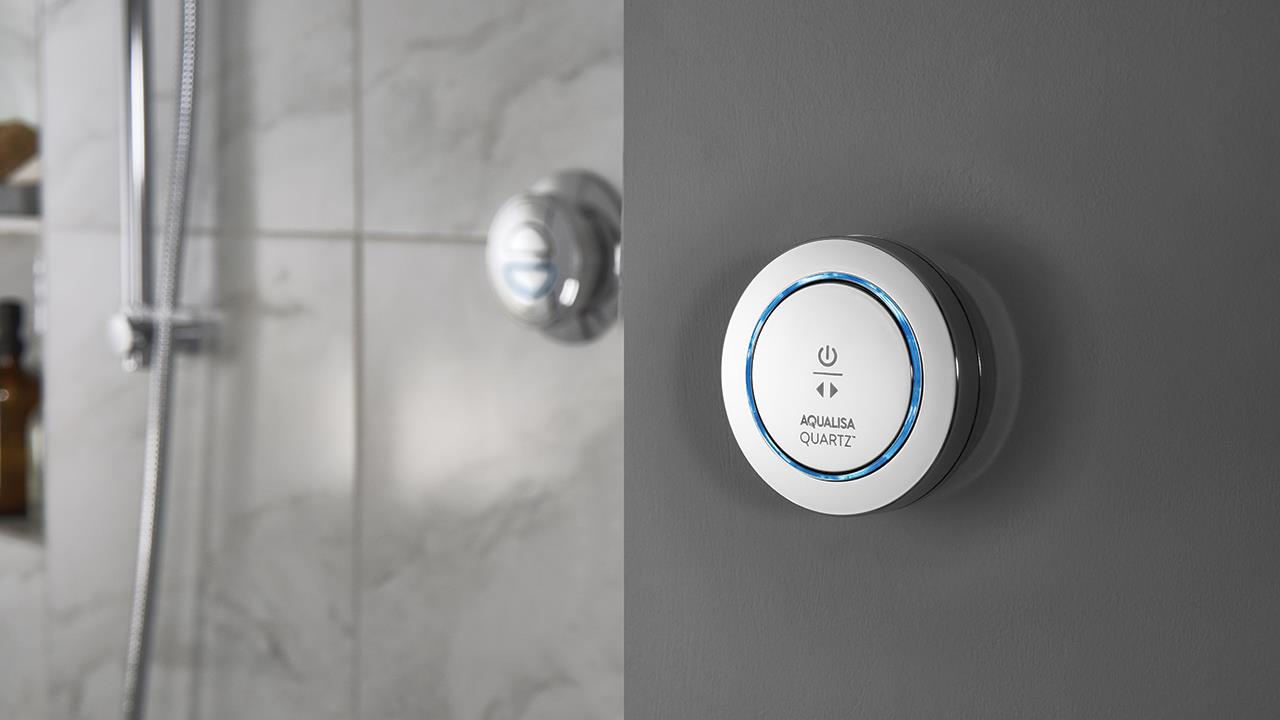

Richard Harvey, Commercial Director for Plumbing and Heating at Wolseley, explores what’s driving the trend for digital showering and what the future holds for installers.
When mixer showers became popular in British homes during the 1990s, nobody could have predicted the innovations that would develop over the 30 years that followed. Three decades on, and it’s now hard to find a bathroom without thermostatic mixers and, moving further on still, showers are now catching up with our other household technologies, with users able to control their shower from their smart devices or with a voice assistant.
With temperature control and the ability to monitor water usage at the touch of a button, digital showers are now more appealing than ever to the average homeowner.
Opportunities ahead
The core target demographic for digital showers is undoubtedly younger consumers, however this doesn’t mean they are exclusive to the younger generations. Any customers that are familiar with the basic concept of smart technology can easily get to grips with digital showers. In fact, it is the customers that sit in that ‘older’ demographic, who tend to have the money to spend and are likely to seek a high-quality product like a smart digital shower.
The rise of home assistants like Google and Alexa mean that many are already controlling their central heating and security systems through the ‘Internet of Things’ – digital showers are just the next thing that has come along to bolt on to these technologies. The desire to control and monitor everything will only benefit the digital shower market.
As the world becomes more environmentally aware, customers will proactively look for products that can help to reduce their water consumption. The digital shower’s ability to monitor water usage and temperature, while remaining stylish, makes it appealing to many looking to reduce their environmental footprint.
There is also link between the rising interest in wetrooms and digital showering, potentially highlighting the explanation as to why these showers are surging in popularity. A lot of people are turning to wetrooms in a bid to save space and there is an appetite among customers to have a better quality shower when relinquishing the bath.
Challenges to address
With digital showers in their current guise being relatively new and comparatively expensive, installers may face challenges when convincing the end-user of their benefits. With a good quality mixer shower available for between £100 and £250, convincing customers that the jump to a digital shower that might cost between £400 and £600 will require installers to be aware of all the benefits to support the upsell process.
But, from an installation perspective, it is the same as any shower. All that may be required is knowledge of how to then connect the shower to the user’s voice assistant, wall control, or smartphone once the installation is complete. The average time takes a couple of hours to install with no more work than is usually involved with a standard mixer shower.
The other issue that’s applicable across the whole industry is that customers are increasingly buying their own products online and shopping around, reducing the chance of being able to make much of a margin on the product. Because digital showers are a fairly new concept to many consumers though, they may still rely on an installer’s knowledge, so it’s worth familiarising yourself with what’s available in order to make additional revenue through product margin. Installers can visit a Wolseley bathroom showroom and let our experts guide their customers to a decision that’s right for them while keeping the installer’s best interests front of mind.
What’s hot?
The likes of Aqualisa and Mira are arguably the two biggest players in the market for digital showers at the moment both of which have a great reputation for quality products.
Aqualisa has recently launched its Q range, which allows users to set a timer to turn off the water after a set amount of time – ideal for customers with children or those looking to reduce their bills.
Mira’s Mode range of digital showers offers smart phone integration, allowing users to use ‘warm-up’ mode before they get to the bathroom, ensuring the shower is up to temperature by the time they are ready to get in.
All things considered, it’s safe to say that digital showers are here to stay. As technology around the home improves to suit user convenience more than ever before, smart showers will continue to surge in popularity. Costs for this technology are at the moment a little high for many homeowners but their lack of understanding also presents installers with an opportunity to educate their customers and make a higher margin than traditional showers.
If you'd like to keep up-to-date with the latest developments in the heating and plumbing industry, why not subscribe to our weekly newsletters? Just click the button below and you can ensure all the latest industry news and new product information lands in your inbox every week.